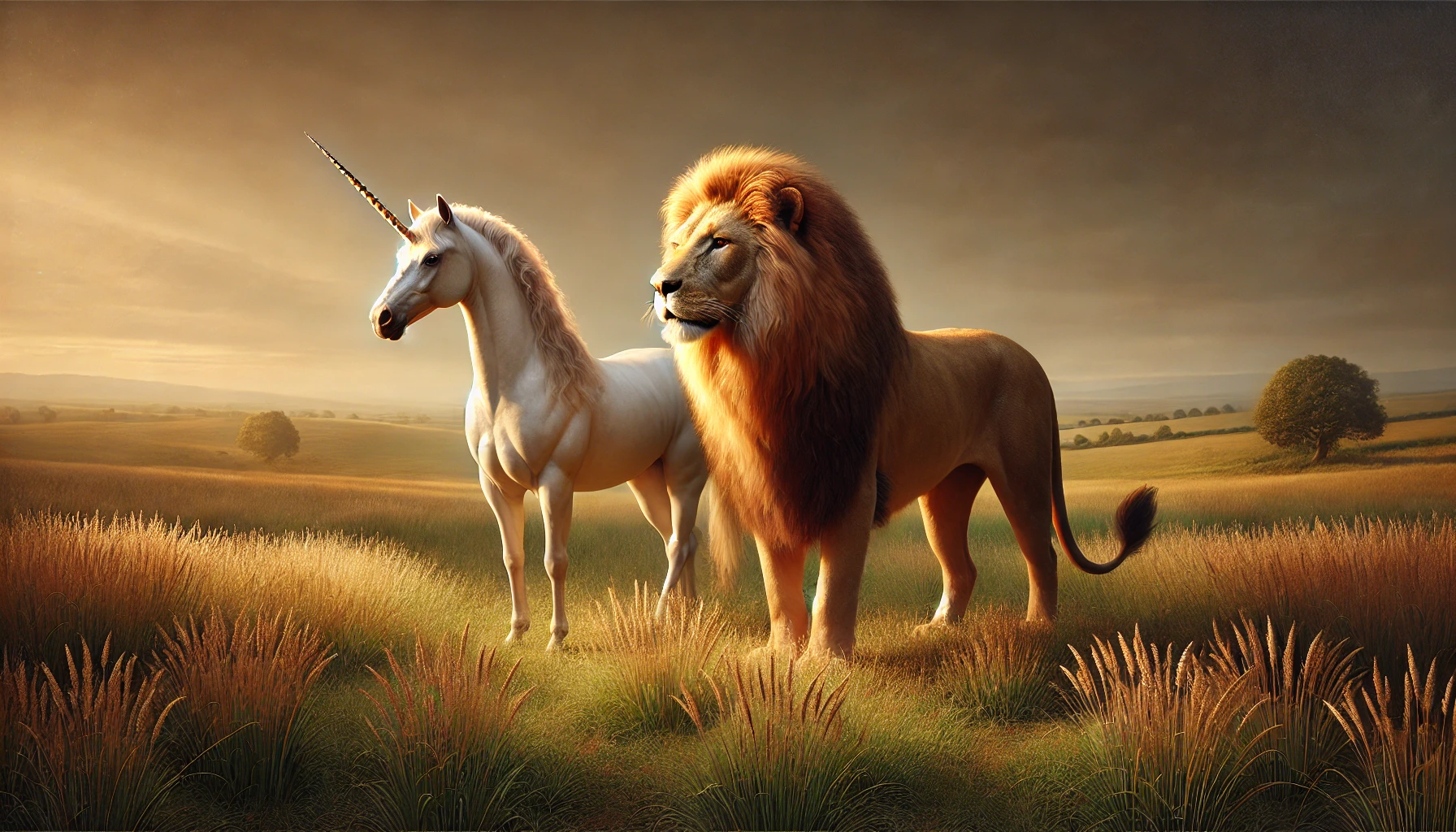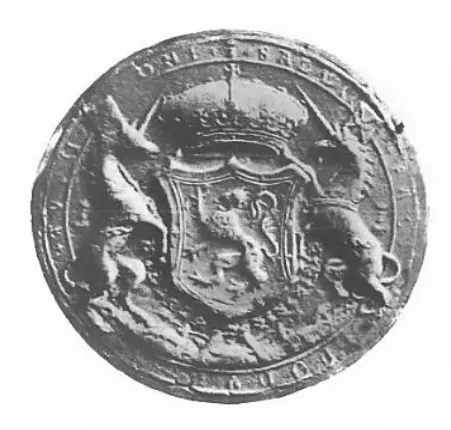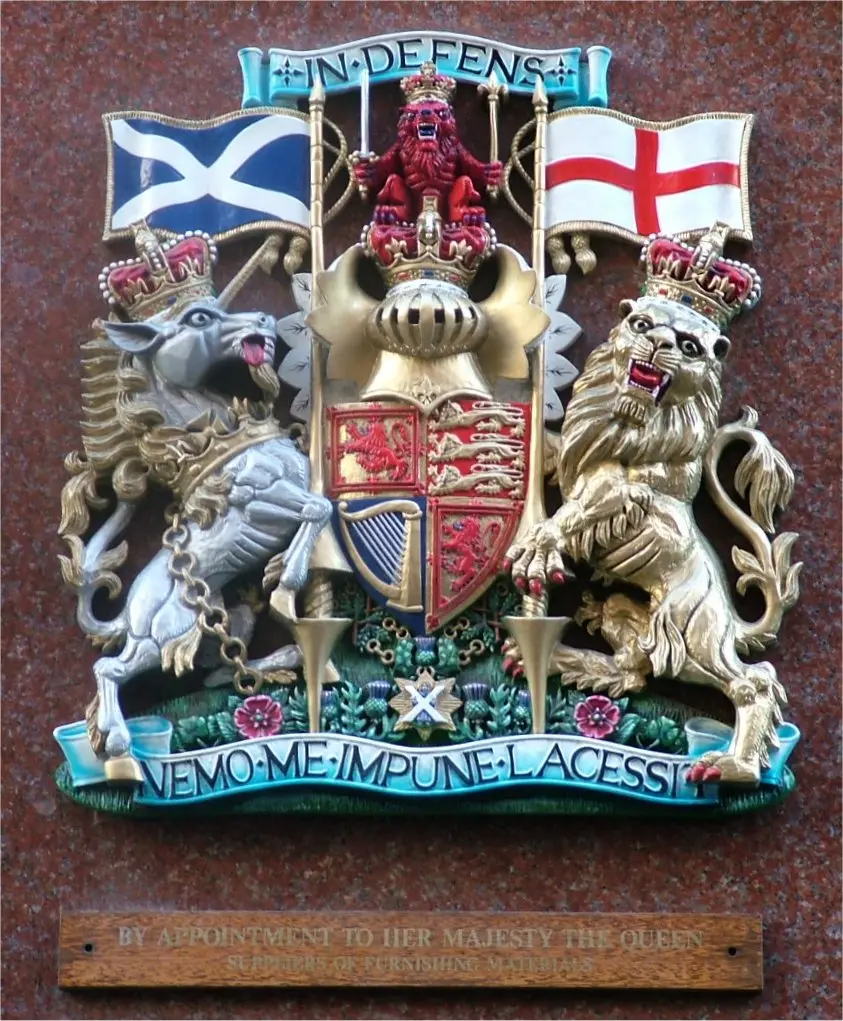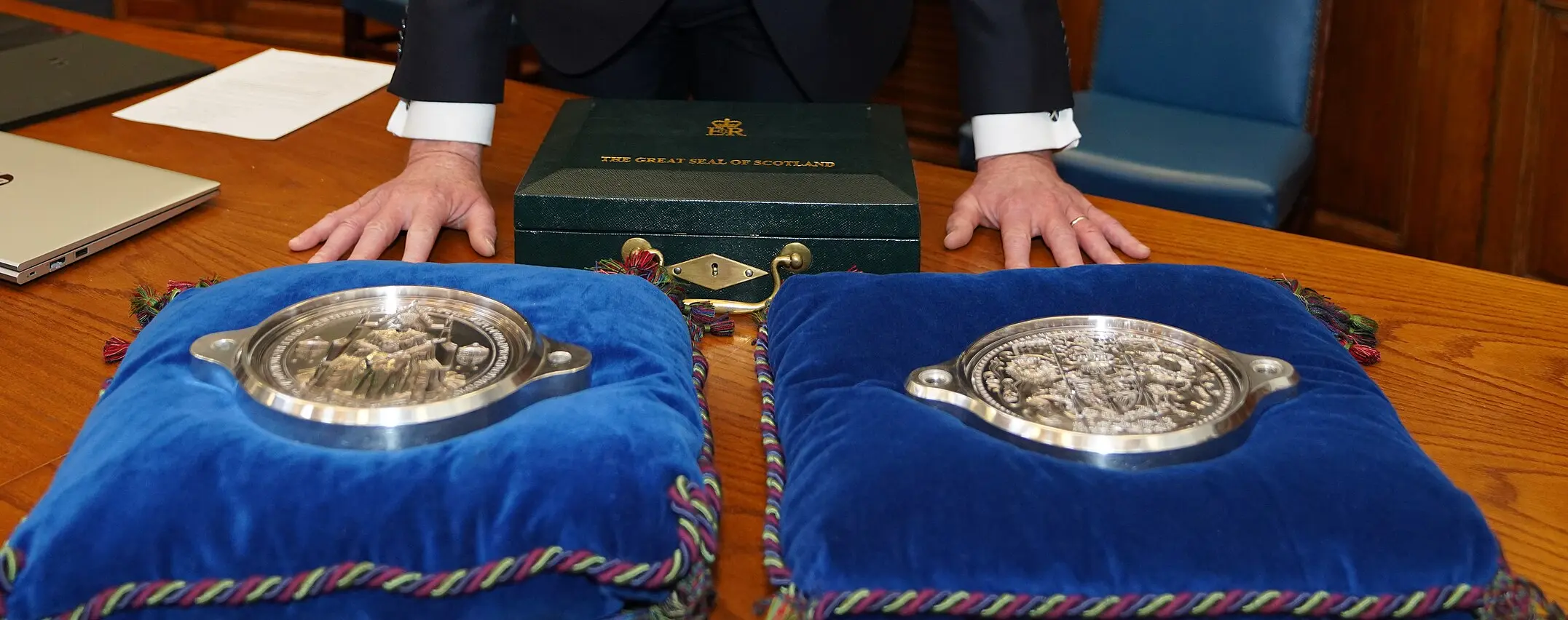The Lion and the Unicorn
Wednesday January 01, 2025



The Royal Coat of Arms stands as one of the most enduring symbols of monarchy, carrying layers of historical and cultural significance. Beyond its decorative function, it encapsulates the identity and authority of the Crown, serving as a visual shorthand for governance, sovereignty, and tradition. Over the centuries, it has adorned everything from official documents to courtrooms and even currency, embedding itself deeply in the public consciousness.

In 1603, the Union of the Crowns brought England and Scotland under a single monarch with James VI of Scotland ascending to the English throne as James I. This union was personal rather than political, and the heraldic traditions of both kingdoms remained distinct, reflecting the separate institutions and identities of the two nations. A century later, the Acts of Union in 1707 formally united the parliaments of England and Scotland, creating the Kingdom of Great Britain. Even then, heraldry continued to respect the individuality of each nation within the union.
The Royal Coat of Arms, in its distinct forms for use in Scotland and England, provides a window into this dual identity. It showcases not only the unity of the monarchy but also the persistence of national traditions and pride. The evolution of these coats of arms over the centuries tells a story of negotiation, adaptation, and mutual recognition that continues to resonate today.

The heraldic traditions of Scotland long predate the Union of the Crowns in 1603. The central element of the Scottish royal arms–the lion rampant on a red field surrounded by a double tressure fleury-counter-fleury–is among the most recognizable symbols of Scotland’s national identity. This design, formally known as the “Royal Banner of Scotland,” was adopted in the 12th century during the reign of William I (William the Lion), who is credited with introducing the lion rampant as the symbol of royal authority in Scotland.
The lion as a royal emblem has deep roots in medieval heraldry, symbolizing strength, courage, and sovereignty. Its use by William I reflects Scotland’s growing sense of autonomy and power during his reign, particularly in the face of external pressures from England. The double tressure fleury-counter-fleury surrounding the lion is believed to have been added as a mark of alliance and protection, possibly signifying the “Auld Alliance” with France.
By the late Middle Ages, the arms of Scotland had become a key element of the kingdom’s identity, used on royal seals, banners, and official documents. The lion rampant was so central to the heraldic identity of Scotland that it retained its prominence even after the personal union of the crowns in 1603. Under James VI and I, the lion rampant was incorporated into the new quartered arms of the United Kingdom, occupying the second quarter when displayed in England and the first quarter in Scotland, reflecting its continued significance.
.svg)
In 1603, the ascension of James VI of Scotland to the English throne as James I marked the first time the two kingdoms shared a monarch. This Union of the Crowns did not merge the governments of Scotland and England, but it did necessitate a delicate balancing act in the realm of heraldry. James sought to emphasize his new role as ruler of both nations while respecting their distinct identities.
To symbolize this duality, James commissioned a unified coat of arms that incorporated elements from both countries. The lion rampant of Scotland, ensconced within a double tressure fleury-counter-fleury, joined the three lions passant guardant of England. Ireland’s harp, a nod to the kingdom’s complex relationship with the Crown, completed the design. Each symbol was carefully arranged to maintain parity: in Scotland, the lion rampant occupied the first and fourth quarters of the shield, whereas in England, the three lions held that position, pushing Scotland’s lion to the second quarter.
This quartered design became a powerful expression of unity under a single monarch. It balanced tradition with innovation, ensuring that the heraldic emblems remained representative of their respective nations while visually affirming James’s dual authority. Early depictions of this coat of arms–found on royal seals, coinage, and architecture–highlight the intentional symmetry, with no single kingdom given absolute primacy. From this point on, the arms of Scotland, and later the United Kingdom in Scotland, followed the pattern described before.


The Acts of Union in 1707 brought the parliaments of Scotland and England together to form the Kingdom of Great Britain, unifying them politically under a single legislative body. This integration extended beyond governance, prompting adjustments in heraldic practices to reflect the new constitutional reality while preserving the cultural distinctiveness of each nation.
The Royal Coat of Arms saw minimal structural changes following the union, but its symbolism became even more pronounced. The quartering arrangement–already established under James VI and I–remained intact, with England’s three lions and Scotland’s lion rampant alternating in prominence depending on location. In Scotland, the lion rampant continued to hold the first and fourth quarters, maintaining its position of honor. In England, this arrangement was reversed, reflecting the centrality of the English lions in the southern kingdom.
This careful balance in the arms underscored the delicate relationship between the two nations. While the union aimed to create a cohesive political entity, the heraldic distinctions allowed for the continued expression of Scotland’s national pride and historical sovereignty. Visual elements like the placement of symbols and the use of the Scottish Crown in Scotland reinforced this cultural duality, ensuring that each kingdom’s identity remained visible despite the political merger.
The shield of the Royal Coat of Arms is the central element of its design, and its arrangement reflects the complex relationship between England and Scotland. In the English version, the first and fourth quarters prominently feature the three lions passant guardant, the historic arms of England, while the second quarter displays the lion rampant of Scotland. The third quarter is reserved for Ireland’s harp, representing the Crown’s jurisdiction over the island. This arrangement underscores England’s dominant position within the union, both geographically and politically.
In contrast, the Scottish version of the arms prioritizes the lion rampant of Scotland, placing it in the first and fourth quarters of the shield. England’s three lions are relegated to the second quarter, reversing the hierarchy. Ireland’s harp remains in the third quarter, unchanged. This deliberate reordering reflects the historical insistence on Scotland’s equal status within the union, particularly in contexts where the arms are displayed in Scotland itself.
The inclusion of France’s fleurs-de-lis, seen in early versions of the English arms, offers an additional layer of historical context. Retained until the Act of Union, these fleurs-de-lis were a vestige of England’s historical claim to the French throne. Their absence in the Scottish version reinforces the localized focus of heraldic traditions, as the fleurs-de-lis had little resonance in Scottish identity.
These differences in arrangement carried significant political weight. In a period when symbols were an essential part of governance, the shield’s quarters acted as a visual statement of authority and balance. The Scottish arrangement emphasized the Crown’s commitment to respecting Scotland’s identity and autonomy, a sentiment necessary to maintaining peace in a politically fraught union. Similarly, the English version reinforced the dominant role of England within the broader monarchy.
Illustrations of the shields capture these distinctions vividly. In English contexts, the shield often appeared alongside symbols of centralized power, such as the Tudor rose, emphasizing unity under an English-dominated monarchy. Scottish depictions, however, integrated the thistle, Scotland’s national emblem, further asserting regional identity. These subtle yet meaningful differences in visual presentation exemplify how heraldry adapted to reflect the dual identities within the union, ensuring that both nations saw themselves represented within the Royal Coat of Arms.
The supporters of the Royal Coat of Arms are among its most visually striking elements, and their arrangement underscores the cultural and heraldic distinctions between England and Scotland. In the English version, the supporters feature a crowned lion on the dexter (right-hand) side, symbolizing England’s strength and sovereignty. On the sinister (left-hand) side stands the unicorn, a traditional symbol of Scotland. The unicorn is shown chained, a heraldic convention symbolizing its taming under the authority of the monarchy, a nod to Scotland’s integration into the union.
In the Scottish version, this arrangement is reversed. The unicorn takes the dexter position, asserting its primacy in a Scottish context, while the crowned lion occupies the sinister side. This reversal is not merely aesthetic but deeply symbolic, emphasizing Scotland’s historical sovereignty and equal standing within the union. The unicorn’s position on the dexter side reinforces its significance as a national emblem, deeply embedded in Scottish folklore and identity.
The unicorn holds particular importance in Scottish heraldry, often associated with purity, strength, and untamable spirit. Its depiction with a crown around its neck and a chain underscores a dual narrative: one of independence and pride tempered by the realities of political union. The chained unicorn is a reminder of Scotland’s status as a distinct kingdom within the broader framework of the United Kingdom.
Depictions of the supporters often highlight these differences in subtle ways. In English contexts, the lion’s dominance is accentuated by its crown and stance, while in Scotland, the unicorn’s positioning and regal bearing take precedence. These visual choices further emphasize the symbolic interplay of unity and individuality within the Royal Coat of Arms, showcasing how heraldry adapts to context while preserving the identities of both nations.
.svg)

The crown depicted in the Royal Coat of Arms serves as a powerful visual reminder of the monarchy’s authority, and its variation between the English and Scottish versions reflects the distinct traditions of each kingdom. In the English version, the arms are topped with St. Edward’s Crown, the historic coronation crown of English monarchs. St. Edward’s Crown, with its arches and cross pattée, symbolizes the continuity and supremacy of the English Crown, aligning with its central role in the United Kingdom.
In contrast, the Scottish version of the arms features the Crown of Scotland. This crown, distinct in its design with a single arch and fleur-de-lis motifs, emphasizes Scotland’s sovereignty and unique heritage. It is the ceremonial crown used at state occasions in Scotland, most notably displayed at the opening of the Scottish Parliament. The inclusion of this crown in the Scottish arms serves as a visual affirmation of Scotland’s enduring identity within the union, even as political powers were centralized.
In official representations, these crowns often convey more than mere symbolism. St. Edward’s Crown is frequently associated with unified, imperial authority, while the Crown of Scotland highlights regional autonomy. Together, they encapsulate the balance of unity and diversity that defines the United Kingdom’s heraldic tradition.
The mottos and crests of the Royal Coat of Arms add another layer of symbolism, emphasizing both the unity of the monarchy and the distinct identities of its constituent nations. The English version prominently features the motto “Dieu et mon droit” (“God and my right”), a declaration of divine authority and the monarch’s claim to rule by God’s will. This motto, used universally across the monarchy, underscores the centralizing influence of the English Crown, reflecting its historical dominance in the union.
In the Scottish version, a second motto, “In Defens” (an abbreviation of “In My Defens God Me Defend”), takes its place above the crest. This motto emphasizes Scotland’s unique heritage and the protective role of the monarchy in Scottish tradition. Its placement above the Scottish crest, rather than below the shield as with the English motto, further reinforces its distinctiveness.
The crests themselves also differ in subtle but meaningful ways. In the English arms, the crest features a crowned lion standing on St. Edward’s Crown, symbolizing the monarchy’s strength and unity. In the Scottish version, the lion is seated on the Crown of Scotland, holding a sword and scepter. These elements, specific to Scottish heraldry, highlight the independent legacy of Scotland’s monarchy and its enduring symbolism within the union.
The rendering of these elements varies depending on the context. In English representations, the emphasis on “Dieu et mon droit” and the crowned lion reflects the centralized authority of the monarch. In Scotland, the positioning of “In Defens” and the distinct crest elements assert regional pride and autonomy, ensuring that Scotland’s identity remains an integral part of the heraldic narrative.
The Royal Coat of Arms, particularly in its Scottish iteration, serves as a vivid reminder of Scotland’s enduring sense of nationhood and cultural distinctiveness. The lion rampant, prominently featured in the arms of Scotland, is more than a mere heraldic device. As a symbol of strength, courage, and sovereignty, it resonates deeply with Scotland’s historical narrative, representing a kingdom that has fiercely defended its independence over centuries of political and military struggle. The lion’s association with royalty dates back to the reign of William I, and its integration into Scotland’s heraldry remains a potent expression of national pride.
Equally significant is the unicorn, whose mythical qualities of purity and strength have long been associated with Scottish identity. In folklore, the unicorn is untamable, a fitting emblem for a nation often defined by its resistance to domination. The depiction of the unicorn in chains within the coat of arms carries complex symbolism, representing not only the union with England but also the enduring spirit of a kingdom that retains its distinctiveness even within a larger political framework.
The heraldic differences between the English and Scottish versions of the Royal Coat of Arms highlight a delicate balance between the unity of the monarchy and the preservation of regional traditions. This duality reflects the nuanced reality of a union that sought to create a cohesive political and cultural entity without erasing the identities of its constituent nations. By maintaining distinct heraldic traditions, the monarchy acknowledged the importance of local pride and history, ensuring the arms would resonate with people on both sides of the border.

The quartered shield is perhaps the clearest example of this balance. Its alternating arrangement of England’s three lions and Scotland’s lion rampant visually affirms the shared authority of the Crown across the two kingdoms. However, the positioning of these symbols–determined by the location of display–ensures that each nation sees itself reflected in a way that aligns with its history. In Scotland, the lion rampant’s position in the first and fourth quarters reaffirms its significance, while in England, the three lions retain their primacy.
Ceremonial uses of the arms further emphasize this balance. During state events in Scotland, the Crown of Scotland and the Scottish version of the arms are prominently displayed, reinforcing the unique heritage of the nation within the union. For example, at the opening of the Scottish Parliament, the Crown of Scotland and the Scottish arms take center stage, reminding attendees of Scotland’s enduring identity. In England, the English version of the arms serves a similar role, presenting the Crown as a unifying symbol of governance while subtly affirming England’s centrality in the broader monarchy.
Official documents also provide an avenue for showcasing this balance. Royal charters and proclamations issued in Scotland often bear the Scottish arms, ensuring they resonate with local tradition, while those issued in England carry the English arms. These practices maintain a sense of continuity and respect for regional traditions, even in the context of shared governance.
Ultimately, these heraldic distinctions embody the complex relationship between unity and individuality within the United Kingdom. They serve as a reminder that while the union brought the nations together under one Crown, it also allowed for the continuation of unique traditions, ensuring that no part of the monarchy’s history or identity was lost in the process.
The use of the Royal Coat of Arms varies significantly depending on location and context, reflecting the distinct identities of Scotland and England while underscoring the unity of the monarchy. These arms are not merely decorative; they serve as official symbols of authority and governance, appearing in contexts ranging from government documents to courtrooms and public ceremonies.
In England, the English version of the arms is the standard representation of the monarchy. It appears on royal seals, passports, and other official documents issued by the Crown. The arms are also displayed prominently in English courtrooms, symbolizing the monarch’s role as the ultimate source of justice. Similarly, they are featured on government buildings, military insignia, and even currency, reinforcing their association with the Crown’s authority in everyday life.
In Scotland, the use of the Scottish version of the arms is exclusive to functions and institutions tied to the Scottish Crown. For example, the Court of Session, Scotland’s supreme civil court, prominently displays the Scottish arms to emphasize its jurisdiction within the kingdom. The Scottish version also appears on official documents, seals, and ceremonial items used in Scotland. During state occasions like the opening of the Scottish Parliament, the Scottish arms are given pride of place, often accompanied by the Crown of Scotland, to highlight Scotland’s distinct constitutional identity.
The contexts in which the arms are used also influence their presentation. In Scotland, the prominence of the lion rampant and the use of the Crown of Scotland in the heraldic design reinforce national pride and tradition. In England, the emphasis on the three lions and St. Edward’s Crown reflects the central authority of the English monarchy within the union. These distinctions are not merely symbolic but serve to affirm the shared yet diverse nature of the United Kingdom.

Even in less formal contexts, such as the signage on government offices or the branding of royal institutions, the appropriate version of the arms is carefully chosen to reflect the locale and function. This meticulous attention to detail ensures that the Royal Coat of Arms remains not just a symbol of monarchy but a living emblem of the nuanced relationship between unity and regional identity.
Heraldry occupies a unique space at the intersection of culture, governance, and history. As both art and authority, the Royal Coat of Arms offers a visual narrative that captures the evolving relationship between Scotland and England within the union. It tells a story of negotiation, adaptation, and mutual respect, balancing the unity of a shared monarchy with the diversity of distinct national identities. The arms serve not only as a symbol of the Crown’s authority but also as a reflection of the values, struggles, and triumphs that have shaped the United Kingdom. Through its use of motifs like the lion rampant and unicorn, heraldry becomes a form of storytelling, preserving the essence of national pride while adapting to the realities of political integration.
The differences between the Scottish and English versions of the Royal Coat of Arms highlight this interplay between unity and individuality. From the quartered shields to the unique supporters, crowns, and mottos, each version celebrates the history and identity of the kingdom it represents. These distinctions go beyond aesthetics–they affirm the cultural and political significance of each nation within the union. The Scottish arms, with their emphasis on the lion rampant and the Crown of Scotland, assert a proud heritage that endures despite centuries of political change. The English arms, by contrast, project the centralizing authority of the English monarchy while leaving space for Scotland’s identity.
In examining these heraldic differences, it becomes clear that the Royal Coat of Arms is more than a relic of the past. It remains a living emblem, reflecting the complex and evolving relationship between England and Scotland. By preserving the traditions of both kingdoms, the arms offer a blueprint for unity that respects diversity, a lesson as relevant today as it was in 1603. They remind us that symbols are not just about what we see but also about what they represent: the histories, identities, and futures of the people who claim them.